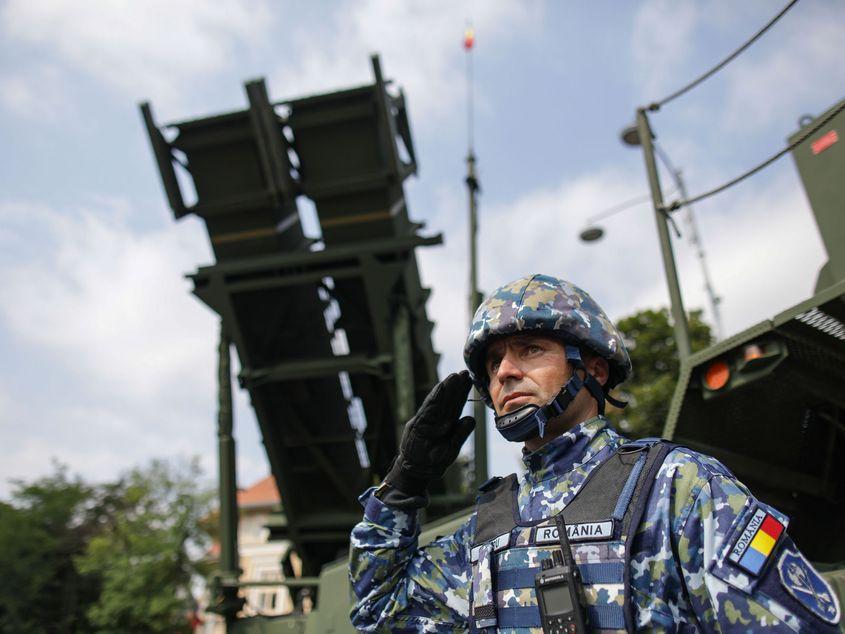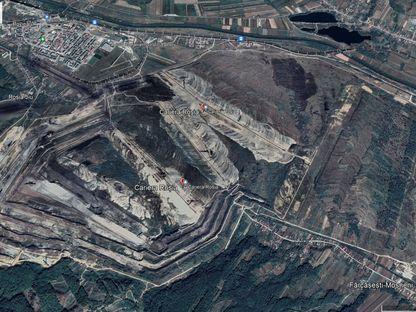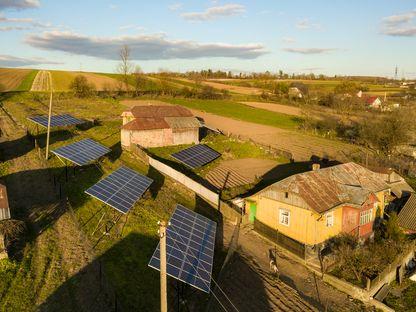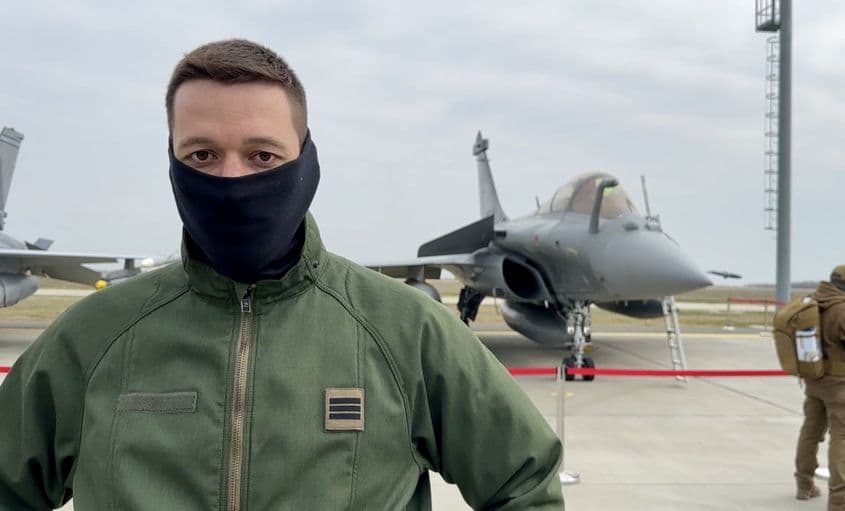
Foto: Octav Ganea / Inquam Photos
23/08/2024
How Prepared Is Romania if the Russian Federation Decides to Attack?
Let's use our imagination and try to confront one of our greatest historical fears: What if the Russians attacked us now? What forces could Romania rely on, on its own, excluding NATO support, should Russia cross our threshold?
Last winter, when the situation on the Ukrainian front was becoming critical, experts at the Institute for the Study of War (ISW) carried out a simulation based on the worst-case scenario – Ukraine's military collapse.
Military experts estimate that Russia could deploy at least three armies, consisting of six mechanised divisions, on the borders with Romania, Poland, Slovakia and Hungary, in addition to the occupation armies present on Ukrainian territory.
Know your enemy: Which Russian armies could directly threaten Romania?
In this case, Romania would be directly threatened by at least two Russian armies: the 25th Army, which would probably be located on Romania's northern border, and the 18th Army, which would directly threaten the Dobruja area on the shores of the Black Sea.
Russia’s 25th Army consists of a division and a brigade - both include attached support regiments, a tank brigade, two artillery brigades, etc. The 25th Army is part of the "Centre" District of the Army of the Russian Federation.
The Russian 18th Army is part of the "Southern" Military District of the Russian Federation and comprises the 40th Army Corps and the 22nd Army Corps, with headquarters in Simferopol/Crimea. It also includes at least one artillery brigade.
The exact number of servicemen in a Russian "army" is an enigma. In the spring, Ukrainians estimated that the 25th Army, for example, would have included around 17,000 men at the time, after heavy losses in the Luhansk region.
Open military sources also indicate that on paper a Russian army, composed of at least two divisions, could have an estimated total strength of somewhere between 24,000 and 50,000 troops (while a single Russian motorised infantry division itself has around 12,000-24,000 soldiers).
We don't know how many battalions made up of ex-prisoners, soldiers accused of insubordination, or deserters might be attached to these units. It is well known that Russian tactics against the Ukrainian army include using sacrificial troops as a sort of "airbag" for their regular units. PressOne has previously written about this.
Mulți ne citesc, puțini ne susțin. Fără ajutorul tău, nu putem continua să scriem astfel de articole. Cu doar 5 euro pe lună ne poți ajuta mai mult decât crezi și poți face diferența chiar acum!
Presently, 70 percent of the Russian army's casualties in Ukraine are estimated to come from the ranks of these disciplinary units.
What the Romanian army looks like on paper
Romania's military strategy shows that, in the event of war, the brunt of the burden falls on the Land Forces: they have only 8 manoeuvre brigades (one brigade has about 5,000 soldiers, so we are talking about 40,000 soldiers in total). The manoeuvre brigades are basically combat units that can be sent directly into combat and can "manoeuvre" in defence or attack.
The Romanian military forces consist of:
- Land Forces, comprising eight manoeuvre brigades, two combat support brigades, one research, surveillance and reconnaissance brigade, and three logistics support bases.
- Air Force, comprising five air bases, an air defence brigade, a search, surveillance and reconnaissance brigade, a special operations air group and a logistics support brigade.
- Naval Forces, with a research, maritime surveillance and electronic warfare brigade, a logistics support base. Plus, the maritime and riverine fleets.
- Special Operations Forces (SOF), comprising two special operations battalions, a commando battalion, a naval special operations forces division and a support battalion.
Coal Mining Expansion Leads to Deforestation: Over 470 Hectares of Forest Cut Down in Gorj, Romania
Over the past six years, more than 470 hectares of national forest land have been allocated by the government, without compensation, to the Oltenia Energy Complex (CEO) for the expansion or opening of new coal mines.
The not-so-green Romania. The state delays settlements for photovoltaic panels by 2 years
PressOne reviews the main dysfunctions in the production, consumption and distribution of energy from renewable sources, as revealed by discussions with consumers and data provided by official sources at the request of our editorial office.
These are complemented by medical structures, a military intelligence brigade under the General Staff, and communications, logistics and cyber-defence units.
This altogether makes up 16 brigades (10 Land Forces, two Air, one Naval, one military intelligence, plus 3-4 SOF operations battalions – roughly equivalent to a brigade). Thus, we can foresee that the frontline units will include the eight manoeuvre units from the Land Forces, plus the four special operations brigades (one naval, one air force, one General Staff, plus the SOF). Twelve brigades of 5,000 men each means about 60,000 troops.
In addition, according to the Defence White Charter, during wartime, the Romanian army must, "in the event of prolonged combat actions, be able to generate and prepare at least one more division of ground forces". A division has around 10,000 soldiers.
Un newsletter pentru cititori curioși și inteligenți.
Sunt curios
Theoretically, Romania will thus oppose the Russians, on its own, with no more than 70,000 combat-ready troops. That's who we're marching with. What do we equip them with?
What fighting techniques would we use against the Russians?
Romania's military strategy, adopted in 2021, has already been overtaken by the realities of the war in Ukraine, where we can see how much the use of drones on the battlefield has evolved.
In this respect, the Ministry of Defence (MApN) informs us that the first "training flights" with the first Bayraktar drones will take place during summer 2024, out of a total of 18 that will be deployed by the army.
At the end of 2022, the army announced that it would also purchase 21 Israeli Watchkeeper drones.
As for pocket drones, the head of the Armaments Directorate of the Ministry of National Defence, Teodor Incicaș, said in 2023 that Romania had realised "a first product and we are going to develop the second one."
In terms of loitering munitions, also known as kamikaze drones, we had a "notice of intent" published by the MapN in 2022 and a cancelled tender the same year. Since then, nothing.A report by the Royal Institute for Strategic Studies (RUSI) in London notes that the Ukrainians are expending as many as 10,000 drones a month (300/day) in the war with the Russian Federation.
© EPA-EFE/HANNIBAL HANSCHKE | Ukrainian soldiers launch a drone on the front line in the Kherson region, Ukraine, on November 7, 2022.
In addition, the Russian army currently has at least one drone sub-unit per company (a Russian motorised regiment can have as many as 15 companies).
As for the rest of the purchases, Romania is expecting to buy 54 American Abrams tanks - although the first arrivals are not expected before 2026. Until then, the Romanian armed forces are still fielding a few Brezhnev-era tanks, and a few dozen tanks from the Ceauşescu era that were modernised in the 1990s.
Romania will also receive 54 more modern South Korean self-propelled guns – the first delivery is expected in 2027.
The Romanian army has 94 Piranha wheeled armoured vehicles, with another 47 soon to be delivered to the Land Forces. In total: 141 of these carriers, enough to equip one brigade and one and a half battalions (given that, as we have seen, the Land Forces have 8 manoeuvre brigades).
Other programmes still pending include the acquisition of light armoured vehicles, new assault weapons, upgrades to communications systems, and a new "infantry fighting machine" (Romania currently fields the Jderul, a Soviet armoured vehicle from the 1960s with an Israeli turret fitted with a Swiss Oerlikon 25mm cannon and state-of-the-art (also Israeli) anti-tank missiles).
Romania has a squadron and a half (26 aircraft at present) of modern F-16s, two operational Patriot batteries, a few dozen HIMARS launchers, several thousand high-performance anti-tank missiles (Spike), too few (if any) short- and medium-range anti-aircraft systems, microscopic quantities of drones and a naval force that is extremely impotent, compared to the military challenges and technologies of the 21st century.
On the naval side, we are waiting for new American-Norwegian NSM anti-ship missiles, after the Pentagon last year awarded Raytheon a contract to manufacture them. As for naval drones, there is no sign.
What a textbook air defence against an adversary like Russia should look like
Returning to the Patriot system, experience from the war in Ukraine shows how crucial it is to have proper air defence. This should ideally comprise A multi-layered ring defence, where systems protect and complement each other.
Broadly speaking, one needs very long-, long-, medium- and close-range air/missile defences.
Romania has the famous Deveselu shield made in the USA and integrated into NATO’s anti-ballistic missile defences. But for the sake of demonstration, let's put it in our own backyard. This shield is dedicated to the interception of medium- and intermediate-range nuclear ballistic missiles. The Americans are working on interceptors capable of hitting even long-range missiles (although, if we are talking about "targeting" Europe, the Russians can only use medium- and intermediate-range missiles – no need to launch warheads from Vladivostok or Irkutsk).
„One floor down" in terms of anti-air/anti-missile defences comes the Patriot, which is effectively a long-range system. We currently have two such batteries operational, which can intercept both ordinary aeroplanes and cruise missiles, and even Kinzhal hypersonic missiles, judging by Ukrainians claims that they have managed to shoot down these using their own Patriots.
Romania wanted seven Patriot systems. Two are operational, two more are due to be deployed soon and three others are pending. Romania has announced that it will donate one such battery to Ukraine, but it is not yet known which one (one of the ones to be operationalised and already in the country, or one of the three yet to be delivered?).
NATO has already installed a Mamba anti-aircraft system, in effect the French equivalent of the American Patriot, in Mihail Kogălniceanu.
But the Patriot system remains vulnerable to drone swarms. It needs its own bodyguards. That's where medium- and short-range anti-aircraft systems come in.
In this area, things have been dragging on since 2017, when Romania set out to buy 16 medium-range systems for the air force and another 16 short-range systems/batteries for the ground forces. So far, only a few crumbs have materialised: this year, only 54 shoulder-fired launchers have been purchased from South Korea.
In addition, as seen in Iran's hundreds of missiles and drone attacks on Israel in the spring, anti-missile/anti-aircraft defences can be complemented by fighter jets, which can intercept enemy drones or even cruise missiles with their own missiles.
So you can do missile defence with F-16?
We have a full squadron of F-16s (17 aircraft), plus another 9 recently supplied by Norway (out of a total of 32). However, we do not know how many Romanian pilots are currently qualified for such missions – the NATO standard is 140 flight hours/year, and the MapN refuses to say how many Romanian F-16 pilots fulfil this minimum benchmark, which must be maintained year after year, so that pilots do not lose their "operational reflexes".
Another important element in the formation of an air defence "bubble" is the anti-aircraft systems on warships – a chapter we can quickly skip over, as none of the ships in the Romanian naval forces are currently capable of such a thing. The British frigates acquired 20 years ago still do not have a modern anti-aircraft/anti-missile system and have only guns and machine guns as "armament".
As far as short-range anti-aircraft defences are concerned, there are also dozens of Cheetahs (aka Gepards; fast-firing anti-aircraft guns mounted on tank chassis and fitted with their own radar), used by the Ukrainians, who claim to have shot down a cruise missile using them.
According to public sources, we have about 70 fixed Oerlikon guns (the same model as those installed on the Cheetahs), which can also be used as point defence for short-range anti-aircraft defence.
Modern anti-aircraft warfare involves equipping these guns with high-performance radars (the Romanian Cheetahs have technology dating back to the 1970s) and AHEAD projectiles (directed autonomously by radar, the operator no longer needs to aim at an incoming target travelling at hundreds – if not thousands – of kilometres per hour).
In an ideal world, we would be talking about an integrated anti-aircraft system with six layers of defence. At the moment, we are indulgently ticking off only two (if we count Deveselu and the 2/7 Patriot systems).
This text is part of a series of articles proposed by TEFI, a cross-border editorial project developed by some of the most powerful newsrooms in Central and Eastern Europe: Gazeta Wyborcza (Poland), Magyar Jeti / 444 (Hungary), SME (Slovakia), Bellingcat (Netherlands), PressOne (Romania), united in a consortium funded by European funds, aiming to promote topics related to national and regional security.

Avem nevoie de ajutorul tău!
Mulți ne citesc, puțini ne susțin. Asta e realitatea. Dar jurnalismul independent și de serviciu public nu se face cu aer, nici cu încurajări, și mai ales nici cu bani de la partide, politicieni sau industriile care creează dependență. Se face, în primul rând, cu bani de la cititori, adică de cei care sunt informați corect, cu mari eforturi, de puținii jurnaliști corecți care au mai rămas în România.
De aceea, este vital pentru noi să fim susținuți de cititorii noștri.
Dacă ne susții cu o sumă mică pe lună sau prin redirecționarea a 3.5% din impozitul tău pe venit, noi vom putea să-ți oferim în continuare jurnalism independent, onest, care merge în profunzime, să ne continuăm lupta contra corupției, plagiatelor, dezinformării, poluării, să facem reportaje imersive despre România reală și să scriem despre oamenii care o transformă în bine. Să dăm zgomotul la o parte și să-ți arătăm ce merită cu adevărat știut din ce se întâmplă în jur.
Ne poți ajuta chiar acum. Orice sumă contează, dar faptul că devii și rămâi abonat PressOne face toată diferența. Poți folosi direct caseta de mai jos sau accesa pagina Susține pentru alte modalități în care ne poți sprijini.
Vrei să ne ajuți? Orice sumă contează.
Share this





